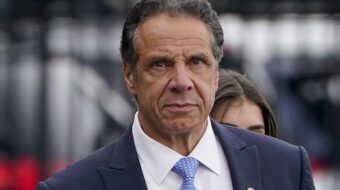WASHINGTON — In the worst disaster of the 33-year history of the Washington, D.C., Metro, a fast-moving train slammed into the rear of a stopped one Monday, killing the driver of the moving train (Jeanice McMillan, age 42) and eight other people, and injuring about 80. Early indications are that failure to carry out needed repair and renovation of trains and signaling equipment very likely played a role.
The accident took place around 5 p.m. Monday on the Metro’s Red Line. The trains which collided were headed into Northeast D.C. from Takoma Park, Md. — against the rush hour traffic — or the casualty rate would probably have been much higher. One train was stopped outside the Fort Totten Station, waiting for another to move out so that it could also stop and let off its passengers. Then a third train smashed into the back of the stopped train at such a high rate of speed that its first car flew into the air and landed on top of the last car of the stopped train.
The nine people killed in the incident represented a cross-section of the D.C. area, from ordinary workers to a general who had formerly commanded the D.C. National Guard, and his wife. Rescuers from the D.C. police and fire departments were joined by those from neighboring communities.
The National Transportation Safety Board (NTSB) was immediately called in, as was the FBI. By end of day Tuesday, NTSB representative Debbie Hersman was able to give some information about the train that had been in motion. It was composed of old cars that had been brought into service between 1974 and 1978, while the stopped train was somewhat newer (D.C. Metro cars are older than those of most other systems, an average of 19.3 years old). The crash occurred on a dry day and on a very slight curve, which should have given the engineer of the moving train a clear view in front of her. In fact, passengers had said that shortly before the crash the driver had come onto the intercom to tell them that she was stopping because of a train in front of her, then the train started up again, with the crash occurring soon thereafter. Examination of the moving train’s braking system showed that it was set to automatic operation, which means that the train should have detected the danger and stopped by itself. And in fact the brakes had been applied sharply.
Although the driver was relatively new, mechanical problems seem, at this early point, to be the most likely cause of the accident. Either something went wrong with the automatic braking system, or with the signal system on the tracks which is supposed to automatically control movement of trains during rush hour and thus prevent them from getting too close to each other.
The NTSB had told the agency which runs the Metro, the Metropolitan Washington Area Transit Authority (MWATA) three years ago that it was far behind on maintenance tasks related to basic safety, and that the group of aging trains to which the moving train belonged should have been phased out or remodeled. The moving train was two months overdue for brake work.
The specific reasons for the crash have not yet been definitely pinned down despite this suggestive evidence. But the politics of neglect which allow such things to happen are well known by the inhabitants of Washington.
The District of Colombia does not have voting representation in Congress, yet Congress for years had a veto over its budgetary decisions. In the specific case of MWATA, funding for both operating and capital expenditures (such as the replacement of aging rolling stock) come out of a Rube Goldberg mixture of sources. About 58% of operating expenses come from advertising and passenger fares. But the rest of the operating expenses, and all of the capital expenses — for repairing and replacing rolling stock and other equipment — have historically depended on year by year votes of subsidies by the District of Colombia and by jurisdictions in Maryland and Virginia that are served by MWATA: Montgomery and Prince George’s counties in Maryland, and the Virginia jurisdictions of Fairfax and Arlington counties, plus the cities of Fairfax, Falls Church and Alexandria. MWATA has had to go hat in hand to each of these jurisdictions each year to meet its budgetary goals.
In 2008, Congress approved a $1.5 billion one-time cash grant which requires that the area governments come up with a permanent way of funding the area’s transportation authority in the future. But in 2008 also, MWATA was socked with a demand that it fork over $43 million to the KBC Bank Group because of the default of the AIG insurance company, which had guaranteed a loan made by KBC to MWATA in 2002. As of writing, a federal judge has issued a restraining order on this demand.
More incidents like the tragedy on the Red Line could be avoided if the federal government and Congress would carry out President Obama’s idea of massive infrastructural improvements to stimulate the economy. The amount of money in the stimulus is enough to buy a whole new fleet of trains and buses for D.C. and other cities — trains and buses that could be manufactured in Detroit and other places that are suffering high unemployment in this moment of crisis.
Emile Schepers lives in the D.C. area.









